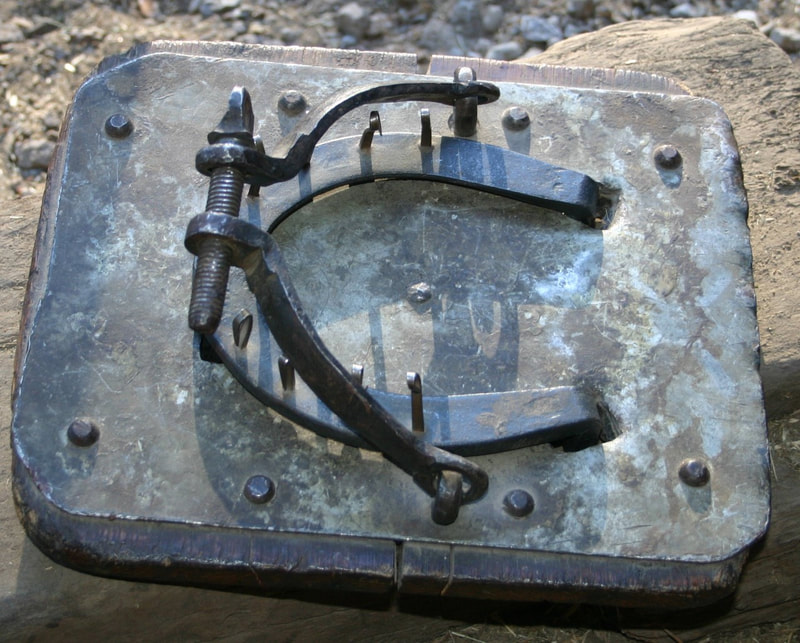|
Video review by Holly Subia
I recently watched a great video about mules on snowshoes. But to say it was just about mules on snowshoes is selling this video short. I also learned that any mule packing I did in the Sierra Nevada was amateur compared to what these men did. This video is called Bill Balfrey’s Mules on Snowshoes and made by Video Mike. You can find it on Mike’s web page under “Documentaries & Historical Subjects”. (https://video-mike.com/collections) The video starts with a presentation by Bill Balfrey where he presents and explains different equipment used by the team that packed mail and mining equipment into the mountains in northwest California. One of the pieces of equipment shone in the video is a snowshoe worn by the mules that helped deliver mail into the mountains during the winter. Each shoe was a square piece of wood and was usually about 10 inches square. There was some size variation with the different styles and who made the snowshoe. The wood of the snowshoes was treated with bees wax and boiled linseed oil to help preserve the wood and prevent the snow from sticking to the snowshoes. There was a slit in the wood where the mule’s toe would sit and two small holes where the mule’s heals sat. These holes were to accommodate the toe and heal caulks on the mule’s shoe. These holes, as well as a special metal clasp that went over the mule’s hoof, held the snowshoe in place. These snowshoes made it possible to take mules into the mountains, to carry mail, during the winter. Bill said they delivered the mail for about 12 to 14 years and only missed 2 days of mail delivery. Bill said they would train the mules to wear the snowshoes by gathering up the mules on a summer day and hold them all in the corrals. Snowshoes would be put on all the mules and the mules that figured out how to walk in the snowshoes worked the winter shifts. The snowshoes were just the first of many obstacles the mules learned to overcome during the winter. Hard packed snow would hold a mule in snowshoes but if the snow got to soft the packers would lay the mule on it’s side, put blinders on the mule and then slide the mule over the soft snow on a sled. Mules walked through deep trenches and tunnels dug into the snow and jumped down snow steps as high as 8 feet. Luckily the winter loads carried by the mules were mostly just U.S. mail. The mules did not carry such easy loads in the summer. During the summer these mules were used to pack all supplies needed at the mines located in the mountains. If one of the mines needed a tractor, the tractor was dismantled and packed in on mules. The tractor was then rebuild at the mine site. Because of the size and nature of these loads, most of them were top loads with little to no side loads. This in and of its self is a feat. These pack strings carried about 600,000 pounds a year. Each mule carried an average of 300 pounds but a mule could be asked to carry up to 600 pounds. A mule asked to carry a super heavy load was retired after they finished that trip. These pack strings worked until about 1920. This is just a short overview of the information in this video. I highly recommend watching this video if you get the chance. To see what these men and mules overcame to get their jobs done is truly humbling.
1 Comment
|
AuthorAmerican Mule Museum: Telling the story of How the West Was Built – One Mule at a Time Archives
January 2021
Categories |




